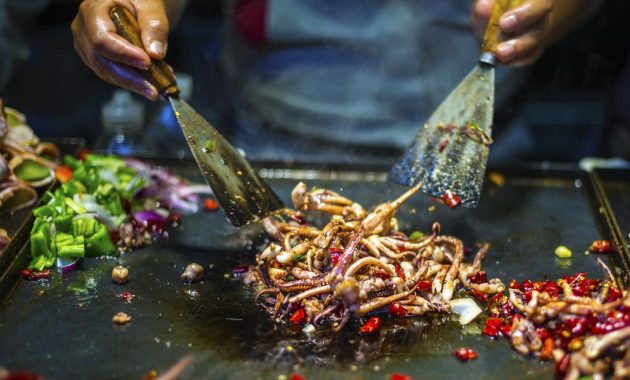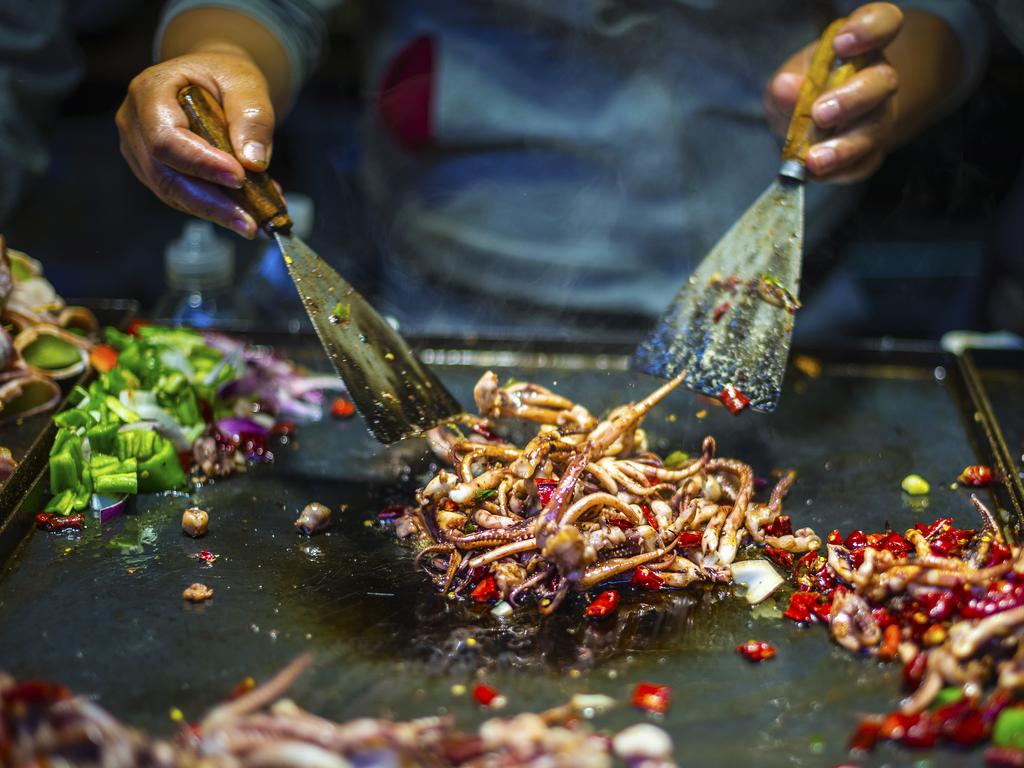
How to Eat Street Food Without Risking Diabetes: A Guide to Safe and Delicious Choices
The allure of street food is undeniable. From bustling city markets to vibrant roadside stalls, the promise of flavorful, affordable meals is a siren song for food lovers. But for those with diabetes, or those at risk, the joy of indulging in these culinary treasures can be overshadowed by concerns about blood sugar control. The very nature of street food, often high in carbohydrates, fats, and processed ingredients, poses a potential threat. This article provides a comprehensive guide on how to eat street food without risking diabetes, empowering individuals to make informed choices and enjoy the experience safely. We will delve into strategies for mindful eating, selecting healthier options, and understanding the impact of different food types on blood sugar levels. Navigating the world of street food requires knowledge and vigilance, but it doesn’t mean sacrificing enjoyment.
Understanding the Risks of Street Food and Diabetes
Before diving into the specifics of safe street food consumption, it’s crucial to understand the inherent risks. Many street food vendors prioritize taste and convenience over nutritional value. This often translates to dishes that are high in refined carbohydrates, unhealthy fats, and added sugars. These elements can cause rapid spikes in blood sugar levels, which is particularly dangerous for people with diabetes. Regular consumption of such foods can lead to poor glycemic control, increasing the risk of long-term complications. These include cardiovascular disease, nerve damage, kidney disease, and vision loss. Furthermore, the portion sizes of street food can be difficult to control. This can lead to overeating and further exacerbate blood sugar issues.
The Carbohydrate Conundrum: Managing Blood Sugar
Carbohydrates are the primary culprit when it comes to blood sugar fluctuations. When digested, carbohydrates are broken down into glucose, which enters the bloodstream. The rate at which this happens depends on the type of carbohydrate. Simple carbohydrates, found in sugary drinks, white bread, and processed snacks, are rapidly absorbed, leading to sharp blood sugar spikes. Complex carbohydrates, such as those found in whole grains, vegetables, and legumes, are digested more slowly, providing a more gradual release of glucose. For individuals with diabetes, it’s essential to be mindful of carbohydrate intake and choose options that have a lower glycemic index (GI). This index measures how quickly a food raises blood sugar levels. Foods with a low GI (55 or less) are generally preferred. They cause a slower and more sustained rise in blood sugar. [See also: Understanding the Glycemic Index and its Impact on Diabetes]
Smart Food Choices: Navigating the Street Food Landscape
The key to enjoying street food safely lies in making informed choices. Here are some tips:
- Prioritize Protein and Fiber: Look for dishes that are rich in protein and fiber. Protein helps to slow down the absorption of carbohydrates, while fiber promotes satiety and helps regulate blood sugar. Opt for grilled meats, fish, or tofu skewers, or dishes with plenty of vegetables.
- Choose Whole Grains Over Refined Grains: If you’re choosing foods with grains, select whole-grain options whenever possible. For example, choose whole-wheat bread over white bread, or brown rice over white rice.
- Be Mindful of Sauces and Dressings: Sauces and dressings can be hidden sources of sugar, fat, and sodium. Ask for sauces on the side and use them sparingly. Opt for sauces that are low in sugar and fat.
- Watch Portion Sizes: Street food portions can be generous. Share dishes with a friend, or order smaller portions to control your carbohydrate intake.
- Look for Fresh, Cooked-to-Order Options: Freshly prepared food is often healthier than pre-made items. It allows you to control the ingredients and customize your order.
Decoding the Menu: Street Food Categories and Their Implications
Different types of street food pose varying levels of risk. Here’s a breakdown:
Noodle Dishes
Noodle dishes can be tricky. The type of noodles, the sauce, and the added ingredients all impact blood sugar. Opt for whole-wheat noodles, if available, and be mindful of the sauce. Choose clear broths over creamy sauces. Limit the amount of noodles and load up on vegetables.
Fried Foods
Fried foods are generally high in fat and calories. They can also contribute to blood sugar spikes, depending on the batter and the accompanying carbohydrates. Enjoy fried foods in moderation, and choose options that are not heavily battered. Consider the oil used for frying, as some oils are healthier than others. [See also: Healthy Cooking Oils: A Guide to Making the Right Choice]
Rice Dishes
Rice dishes can be a good option, but portion control and rice type are key. Opt for brown rice over white rice. Be mindful of the accompaniments, such as sauces and fried toppings. Choose dishes with plenty of vegetables and lean protein.
Grilled Foods
Grilled foods are generally a safe choice. They’re often lower in fat and calories than fried foods. Choose grilled meats, fish, or tofu skewers. Be careful of marinades, which can be high in sugar. Opt for simple seasonings or sauces on the side.
Desserts and Beverages
Desserts and sugary drinks are often the biggest culprits. They can cause rapid blood sugar spikes. Limit your intake of desserts and sugary drinks. Choose sugar-free options whenever possible. If you indulge in a dessert, pair it with a meal that is high in protein and fiber to help mitigate the impact on blood sugar.
Planning Ahead: Strategies for Safe Street Food Experiences
Preparation is key to eating street food without risking diabetes. Here are some strategies:
- Research Your Destination: Before visiting a new area, research the local street food scene. Look for vendors that offer healthier options and have a reputation for quality and hygiene.
- Plan Your Meals: Plan your meals in advance, including what you will eat and how much. This helps you stay in control and avoid impulsive choices.
- Carry Healthy Snacks: Pack healthy snacks, such as nuts, seeds, or vegetables, to help you manage your hunger and avoid overeating unhealthy options.
- Monitor Your Blood Sugar: Regularly monitor your blood sugar levels before and after eating street food. This will help you understand how different foods affect your blood sugar and make adjustments as needed.
- Communicate with Vendors: Don’t hesitate to ask vendors about the ingredients and preparation methods. Many vendors are happy to accommodate requests for modifications, such as less sauce or more vegetables.
The Importance of Exercise and Hydration
Eating street food safely is only one part of the equation. Regular exercise and adequate hydration are also crucial for managing diabetes. Exercise helps improve insulin sensitivity and helps lower blood sugar levels. Aim for at least 30 minutes of moderate-intensity exercise most days of the week. Staying hydrated is also essential. Drink plenty of water throughout the day. This helps to regulate blood sugar and promote overall health. [See also: The Benefits of Exercise for Diabetes Management]
Mindful Eating: Savoring the Experience
Eating street food without risking diabetes is not just about choosing the right foods. It’s also about practicing mindful eating. Pay attention to your body’s hunger and fullness cues. Eat slowly and savor each bite. Avoid distractions, such as your phone or television. This allows you to fully appreciate the flavors and textures of the food. This also helps prevent overeating. Mindful eating is a powerful tool for managing blood sugar and enjoying food without guilt.
Conclusion: Enjoying Street Food with Confidence
Eating street food without risking diabetes is achievable with planning, awareness, and mindful choices. By understanding the risks, selecting healthier options, and adopting a proactive approach, individuals with diabetes can enjoy the vibrant culinary experiences street food has to offer. Remember to prioritize protein, fiber, and whole grains. Be mindful of portion sizes and sauces. Stay active, stay hydrated, and practice mindful eating. With these strategies, you can savor the flavors of street food while maintaining good blood sugar control and a healthy lifestyle. The joy of culinary exploration doesn’t have to be off-limits. It simply requires a thoughtful approach and a commitment to your health. Enjoy the adventure!

